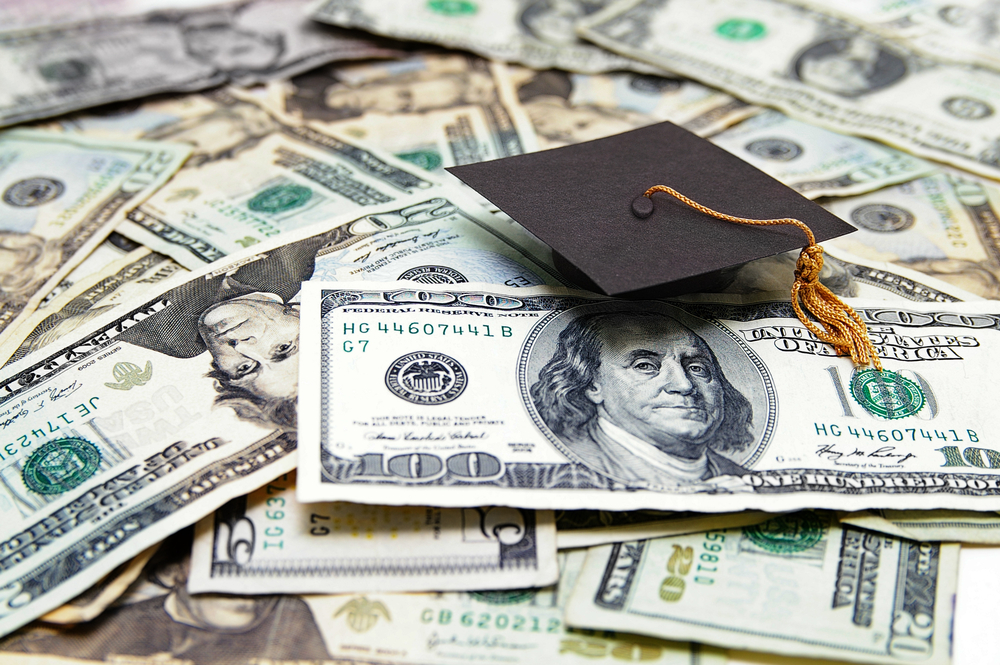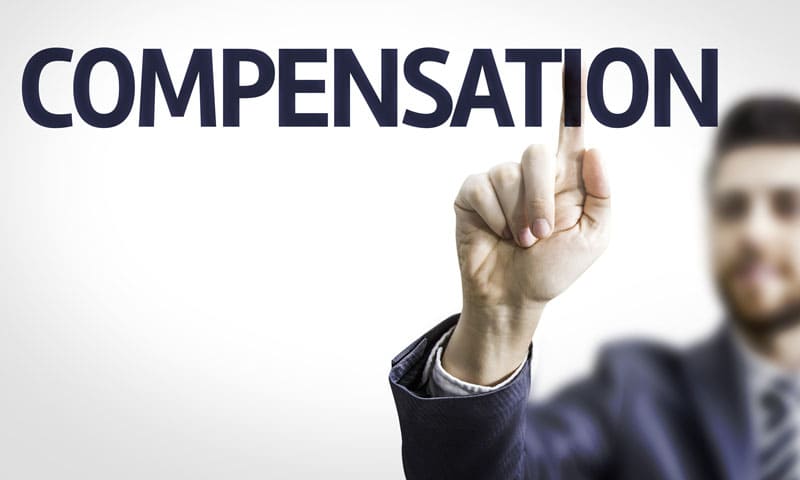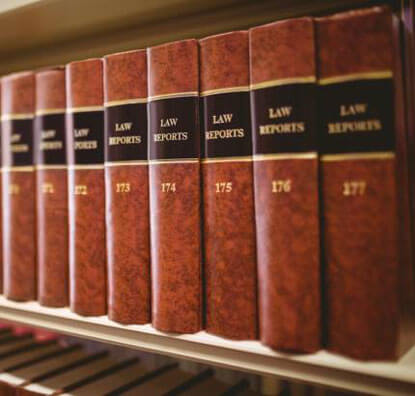
The Biden administration has taken a significant step to alleviate the burden of student loan debt, unveiling a new application for an innovative student loan repayment plan. This latest endeavor comes as a response to the impending resumption of payments, a move that has encountered substantial political obstacles.
Neera Tanden, a key figure in Biden’s domestic policy advisory team, emphasized the transformative nature of this plan for millions of Americans whose student loans have been hindered. The financial constraints of these loans have prevented many from essential life milestones such as starting families, purchasing homes, and pursuing entrepreneurial ambitions.
The SAVE Student Loan Repayment Plan: Easing the Burden on Borrowers
Termed the “Saving on a Valuable Education” (SAVE) plan, this initiative marks the administration’s persistent commitment to address the student loan crisis. It follows an earlier effort to cancel up to $20,000 in debt for specific borrowers, a proposal that was thwarted by the Supreme Court earlier this year.
The essence of the SAVE plan lies in its designation as an income-driven repayment program. This innovative approach tailors repayment obligations to borrowers’ income levels and family sizes. Through consistent monthly payments, participants become eligible for debt forgiveness after a predetermined number of years.
Trust BCG Attorney Search to connect you with top legal employers in your area. Search now!
Effective July 2024, the SAVE plan offers a substantial reduction in monthly payments for undergraduate loans, reducing the percentage of disposable income allocated from 10% to 5%. This shift aims to increase financial flexibility for borrowers, enabling them better to manage their essential expenses such as housing and sustenance.
Understanding the SAVE Plan: An Innovative Approach to Student Loan Relief
For individuals holding undergraduate and graduate loans, the repayment range is set between 5-10% of their earnings, adjusted based on their initial loan amounts.
The SAVE plan is expected to yield extensive benefits and lead to an estimated annual savings of approximately $1,000 for the average borrower.
Significantly, the plan also caters to those with smaller initial loan amounts, considerably shortening their required payment period from 20 years to just a decade for undergraduate loans. On the other hand, borrowers with more significant principal amounts will need to extend their payment period by an additional year for every increment of $1,000 in loans, up to a maximum of 20 years.
To provide immediate assistance, the program incorporates elements that take effect before the resumption of payments. Beneficiaries who qualify for the SAVE plan and earn less than $32,805 will observe their monthly payments reduced to zero until their income surpasses this threshold. The same holds for a family of four with a total income below $67,500.
To curtail the growth of interest, the Department of Education plans to implement an interest accrual cap for those embraced by the SAVE plan. This cap will effectively prevent loans from accumulating interest beyond the coverage of monthly payments.
The Biden administration urges prospective applicants to submit their requests for the SAVE plan in the coming days, anticipating that these benefits will be accessible upon the resumption of payments in October. While no specific date has been provided, administration officials estimate that the processing of applications will take roughly four weeks from receipt.
Addressing concerns stemming from the Supreme Court’s rejection of a previous debt relief program, the administration has taken a fresh approach by revamping the widely-used income-driven repayment scheme, REPAYE, into the new SAVE program.
Despite criticism from conservative quarters, labeling the relief efforts as an improper use of taxpayer funds, the administration remains steadfast in its commitment to provide much-needed relief for borrowers.
How the SAVE Repayment Plan Works: Income-Driven Solutions for Student Loans
Eligibility for the SAVE plan extends to a wide range of borrowers, encompassing various types of direct subsidized and unsubsidized loans. Borrowers with older loans may need to consolidate them into a direct consolidation loan to align with the SAVE plan’s eligibility criteria.
Individuals interested in joining the SAVE plan can submit their applications through StudentAid.gov/SAVE. The status of applications will be conveniently displayed on the applicant’s dashboard upon completion.
Those currently enrolled in the REPAYE income-driven repayment plan will witness a seamless transition to the new SAVE plan, ensuring that their revised payments are in effect by the time payments recommence in October.
With estimations indicating that over 20 million student borrowers could benefit from the SAVE plan, its implementation promises to be a particularly potent relief measure for low- and middle-income families striving to overcome the challenges posed by student loan debt.
Exclusions from Enrollment in the New Plan
Individuals who obtained Parent PLUS loans to finance their children’s education are not eligible to participate in the new program.
In cases where parent borrowers cannot meet their payment obligations, they typically have access to the highest-cost income-driven repayment option, the income-contingent repayment plan. This plan necessitates payment of 20 percent of their discretionary income for 25 years. Any remaining balance at the end of this period is eligible for forgiveness. However, addressing these conditions is a crucial aspect of the new SAVE plan.
Mechanics of the New Save Plan
The SAVE plan follows the general structure of other income-driven repayment plans. Payments are computed based on an individual’s earnings and household size, with annual adjustments. Following a predetermined number of consistent monthly payments, typically around 20 years, any outstanding balance is eligible for forgiveness. It’s important to note that the forgiven balance is subject to taxation. A temporary tax provision, however, exempts balances forgiven until 2025 from federal income tax.
The key distinction with the SAVE plan—taking over the Revised Pay as You Earn program (REPAYE)—is its enhanced generosity in various dimensions. Notably, payments for undergraduate loans are reduced from 10 percent of discretionary income in REPAYE (and 15 percent in other plans) to 5 percent under the SAVE plan. Graduate debt is also eligible for the program, with payments set at 10 percent of discretionary income for that segment. The payment is adjusted proportionally for those carrying both undergraduate and graduate debt.
Furthermore, the SAVE plan has adjusted the payment formula to allocate more income for essential needs, leading to an overall reduction in payments. This adjustment mainly benefits low-income individuals, potentially enabling more of them to qualify for zero-dollar payments.
Defining Discretionary Income
Discretionary income refers to the residual income left after addressing fundamental necessities like housing and food expenses. Income-driven repayment plans necessitate that borrowers pay a portion of this discretionary income.
The SAVE plan employs a modified payment formula that increases the allocation for essential needs, resulting in reduced discretionary income and, consequently, lower payment requirements. Specifically, the plan shields up to 225 percent of the federal poverty guidelines as income protected from repayment. This is roughly equivalent to earning around $15 per hour for an individual borrower. No monthly payment is required if one’s income falls below this threshold. For instance, an individual earning less than $32,805 annually or a household of four with an income below $67,500 would not have to make monthly payments. This modification aims to extend the eligibility for zero-dollar payments to an additional million low-income borrowers.
Treatment of Interest Under the New Plan
Indeed, one of the most appealing aspects of the new plan involves the treatment of interest. If a borrower’s monthly payment does not cover the accruing interest, the Education Department will cancel the uncovered portion. For example, if a borrower owes $50 in interest every month and their payment only covers $30, the remaining $20 will be forgiven, provided that the payment is made. Additionally, those whose income is too low to require payments will have their monthly interest canceled.
This rule offers significant relief to individuals who made payments but saw their balances inflate due to inadequate coverage of interest payments.
Immediate Impact of the Plan
Several key aspects of the plan are already in effect. These include modifying the repayment formula to shield more income, potentially reducing many borrowers’ payments to zero. The revised treatment of unpaid interest is also active. Married borrowers who file taxes separately no longer need to include their spouse’s income in their payment calculation and their spouse is also excluded from the family size calculation.
However, certain benefits, such as reducing payments from 10 percent to 5 percent of discretionary income for undergraduate loans, will come into play from July onwards.
Once fully implemented, the SAVE plan is expected to reduce borrowers’ monthly payments by around 40 percent compared to the REPAYE plan. The reduction may be even more substantial for up to 83 percent lower earners, while higher earners may experience only a 5 percent reduction.
Provision for Borrowers With Smaller Balances
A provision tailored for borrowers with smaller loan balances will be enacted shortly. Starting next summer, individuals with original loan balances of $12,000 or less will make monthly payments for 10 years before becoming eligible for loan forgiveness. This is shorter than other income-driven repayment plans’ standard 20-year repayment period. For each additional $1,000 borrowed beyond the $12,000 threshold, an extra year of monthly payments is required before the balance is forgiven, up to a maximum of 20 or 25 years.
Is the SAVE Plan Optimal in All Scenarios?
The SAVE plan is expected to provide the most economical payment option for most borrowers, making it the likely best choice for many. To assess which repayment plan aligns with one’s circumstances and objectives, the loan simulator tool on StudentAid.gov is handy. Upon signing in, the device incorporates your loans into its calculations. It offers the ability to compare plans side by side, evaluating factors such as long-term costs, both monthly and overall, as well as potential debt forgiveness.
Eligibility for Borrowers in Default Before the Pause
Borrowers who entered default before the payment pause triggered after being at least 270 days behind have been granted a fresh start and are now regarded as up-to-date with their payments. Consequently, they can enroll in the SAVE program or any other repayment plan. Specific steps must be taken before September 2024 to capitalize on this opportunity to prevent long-term default.
To achieve this, one can contact the Education Department’s Default Resolution Group through various channels—phone, online, or mail—and express interest in the “Fresh Start” program, aiming to bring loans out of default. This group can also assist in enrolling in an income-driven repayment plan, including the SAVE plan. Subsequently, loans will be transferred to a regular loan servicer, and the default record will be deleted from the credit report.
Enrollment for Delinquent Borrowers
Borrowers who experienced delinquency in their monthly student loan payments before the payment pause have also been granted a fresh start and can participate in the SAVE program like any other borrower. Going forward, those who fall 75 days behind on payments will be automatically enrolled in the SAVE plan, provided they have authorized the release of their federal tax information to the Education Department. This policy will be implemented from the next July onwards.
How to Enroll in the SAVE Program
Enrollment in the SAVE program can be completed online at StudentAid.gov/SAVE. Borrowers can preview their payment amount before finalizing the enrollment process, which typically takes less than 10 minutes. After submission, the application status can be tracked via the account dashboard.
In the upcoming months, loan servicers will facilitate enrollment and income “self-certification” for borrowers without requiring tax documentation. This can be done on the servicer’s website or via phone.
For individuals already enrolled in REPAYE, there’s no action required. They will be automatically transitioned into the SAVE plan, adjusting their payment amounts accordingly. Switching from another income-driven repayment plan to SAVE is possible without resetting the payment clock.
Managing Processing Time for Initial Payments
In such a scenario, if your application cannot be processed in time for your initial payment, you will be placed in forbearance. This means that no payment will be due for the upcoming billing cycle.
It’s essential to stay informed about the plan’s specific details and any changes that might affect your circumstances. The official StudentAid.gov website can serve as a valuable resource for up-to-date information and guidance related to the SAVE plan and other aspects of student loans.
Don’t be a silent ninja! Let us know your thoughts in the comment section below.












































